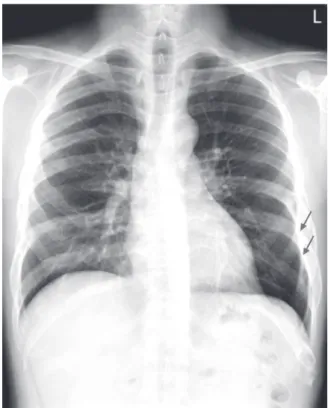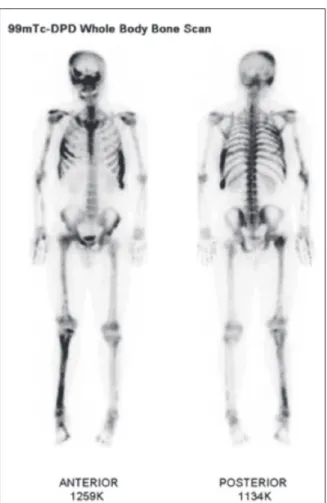Introduction
Fibrous dysplasia (FD) is a rare, sporadically occurring bone disease, characterized by abnormal bone growth where normal bone is replaced by fibrous skeletal tissue composed of bone-forming mesenchyme [1]. FD represents abnormal growth and swelling of bone results poor mechanical
strength which can lead to pathologic fractures.
Most patients have lesions involved in one bone(monostotic) and others have them in multiple bone(polyostotic) [2].
The majority of monostotic lesions are a s y m p t o m a t i c a n d a r e d i s c o v e r e d w h e n radiographs of the involved region are obtained incidentally or during other intentions [3]. On the
Abstract
Fibrous dysplasia is a benign, bony abnormality that is usually asymptomatic. A 41-year-old male with minimal symptoms presented at this hospital with abnormal findings incidentally seen in his ribs on the chest radiograph.
A skeletal survey showed numerous, osteolytic lesions throughout multiple bones. Diagnostic processes for malignancy of undefined primary origin (MUO) were performed in order to identify the underlying primary neoplasm, although abnormal findings were not seen except for multiple bone lesions. A computed tomography guided bone biopsy was performed on his left rib. The final diagnosis was fibrous dysplasia. This case demonstrates that fibrous dysplasia should be considered in the differential diagnosis in young patients with multiple, osteolytic lesions and without a prior history suggesting malignancy.
Key Words : Bone neoplasm, Fibrous dysplasia, Metastasis
Corresponding Author:

